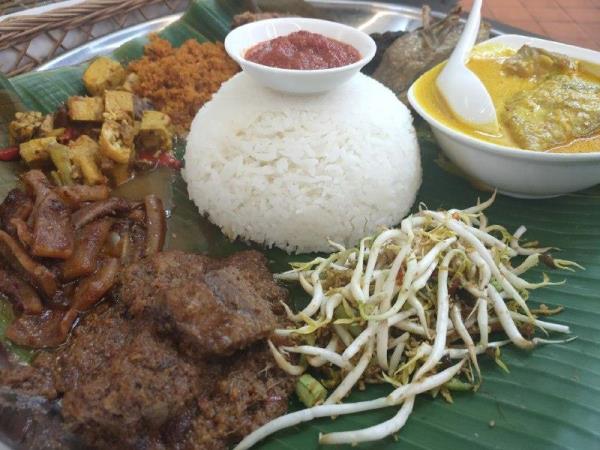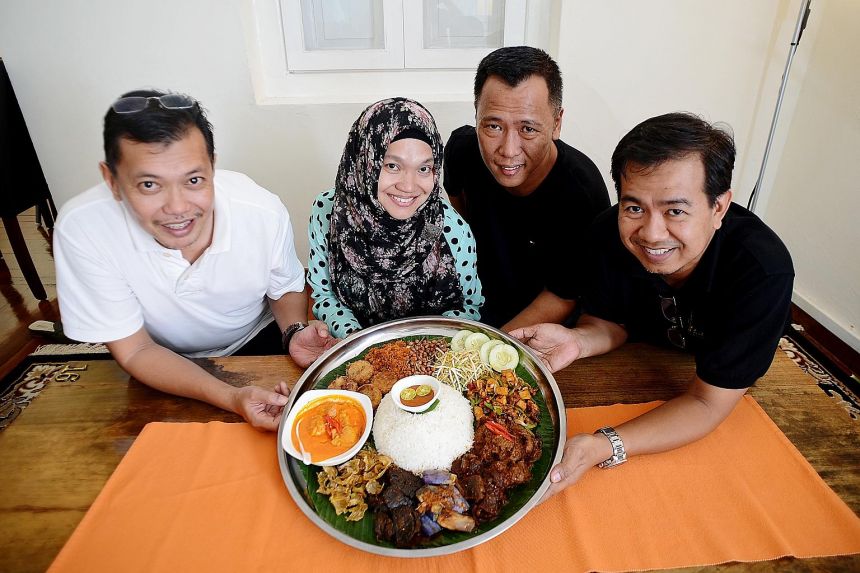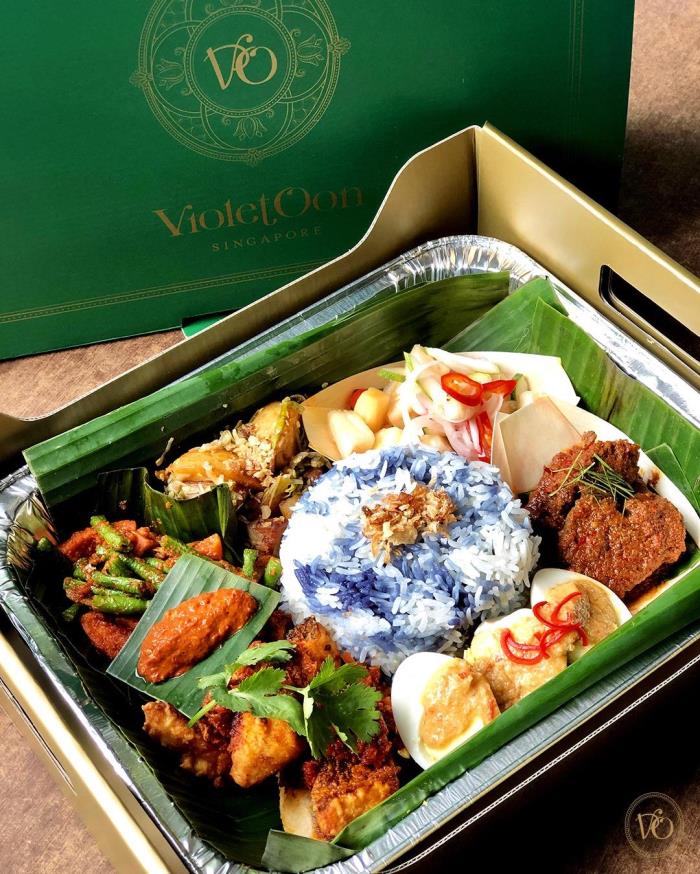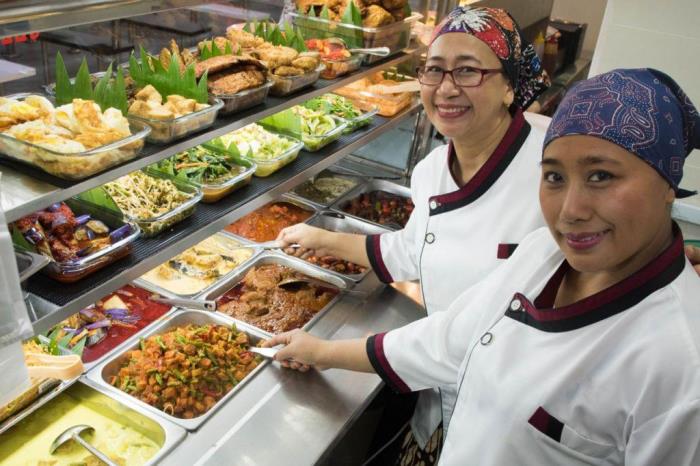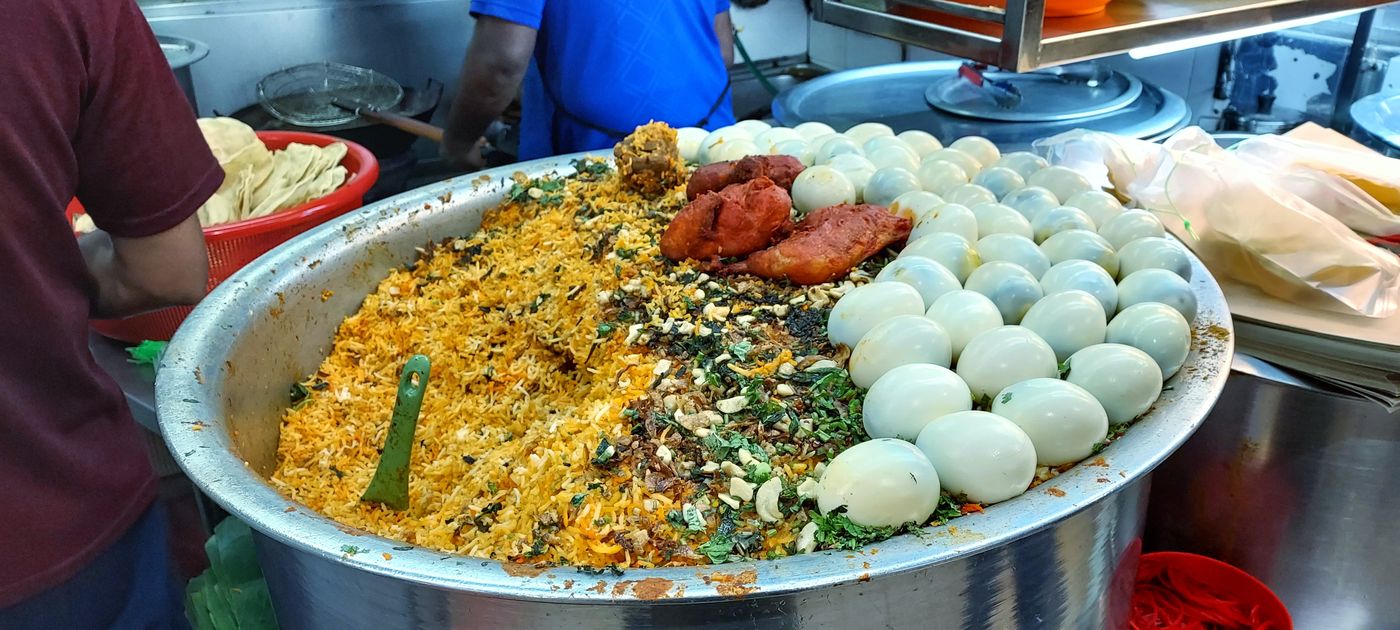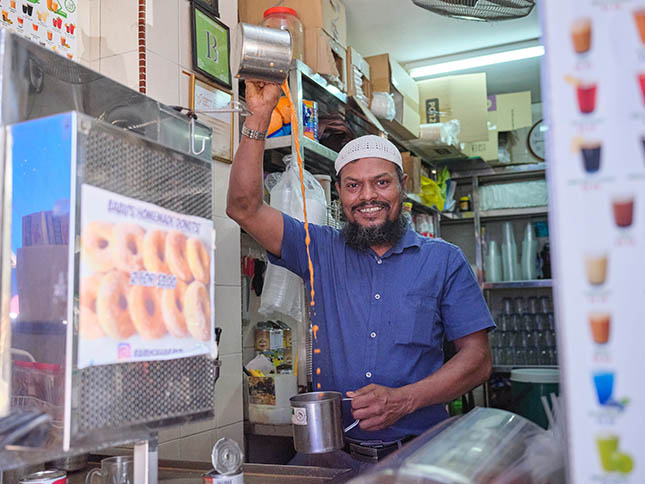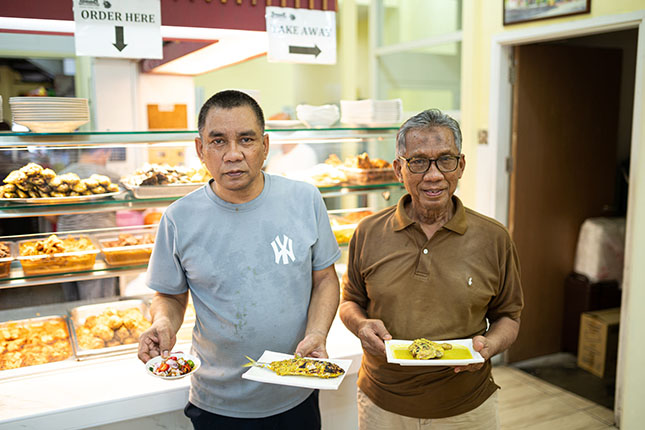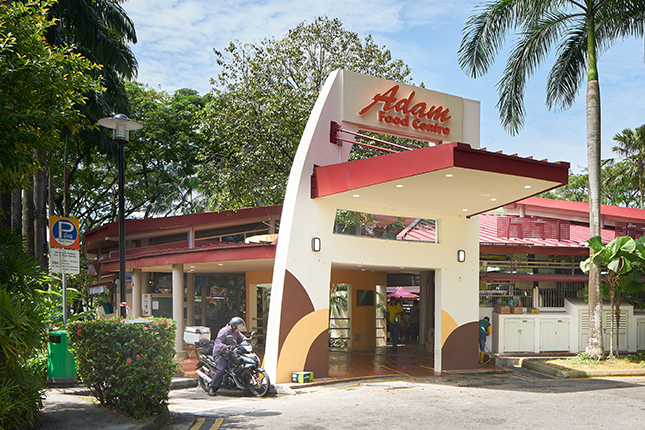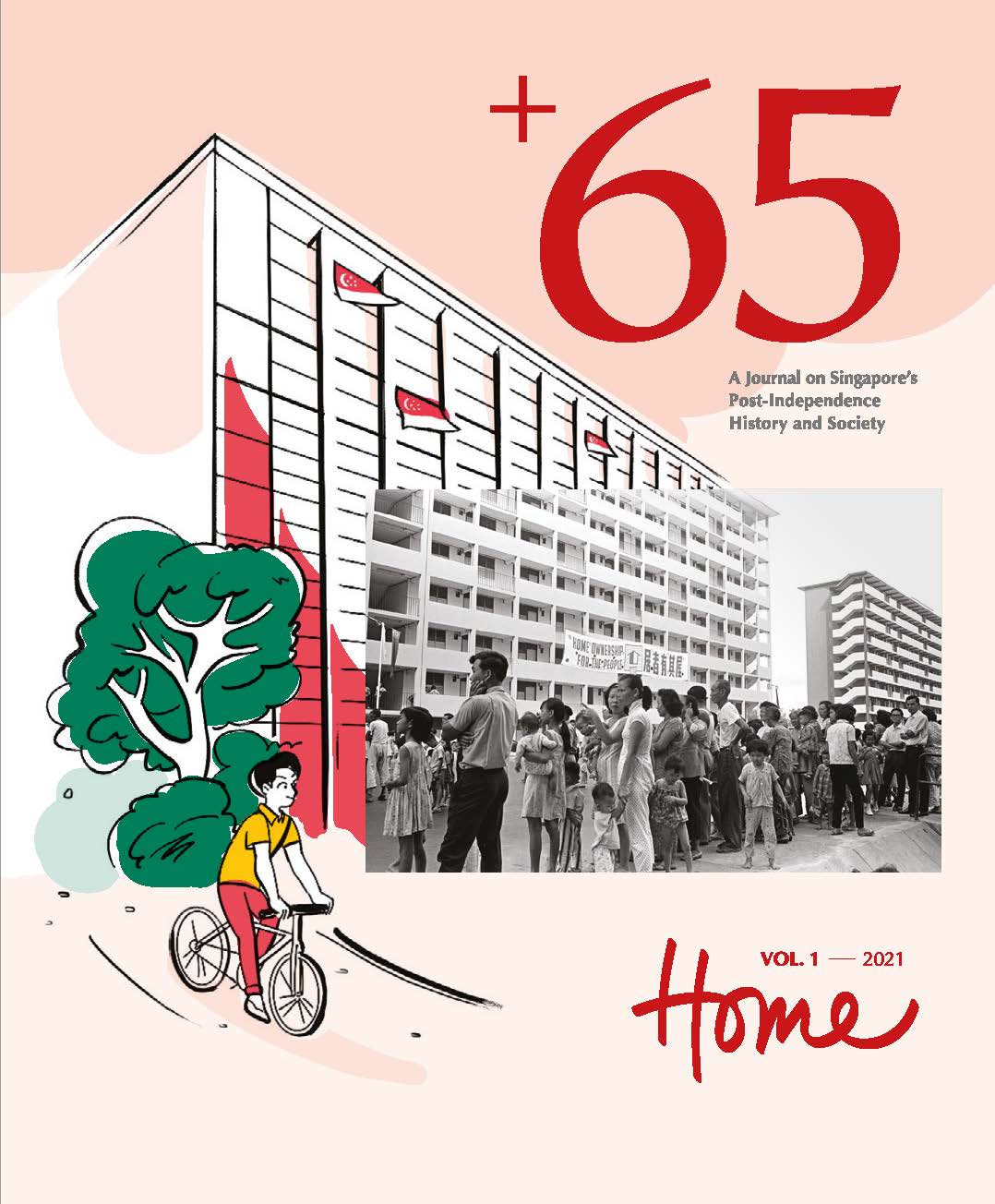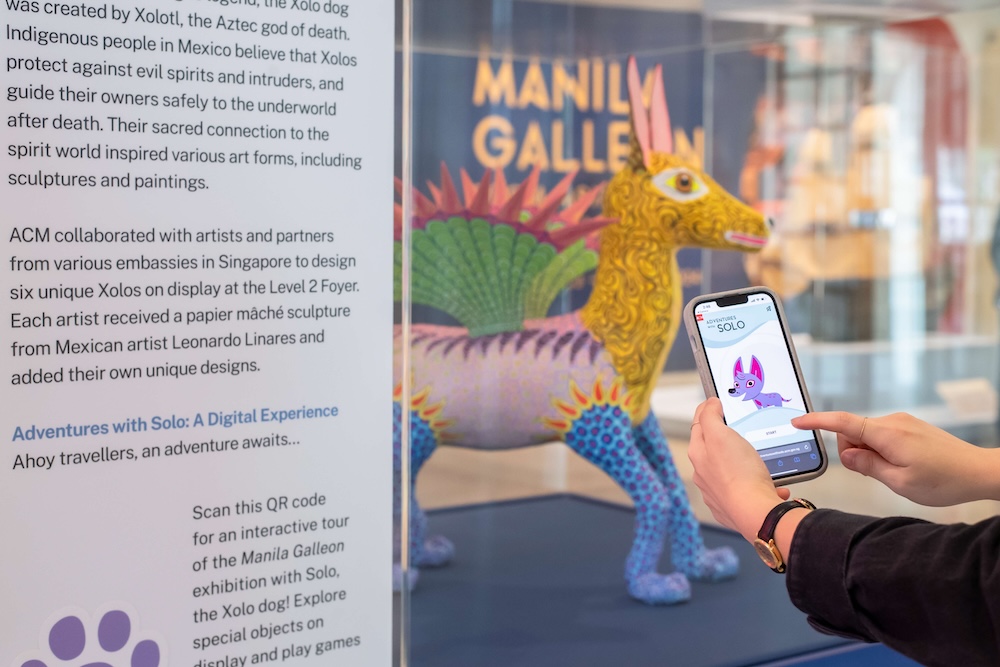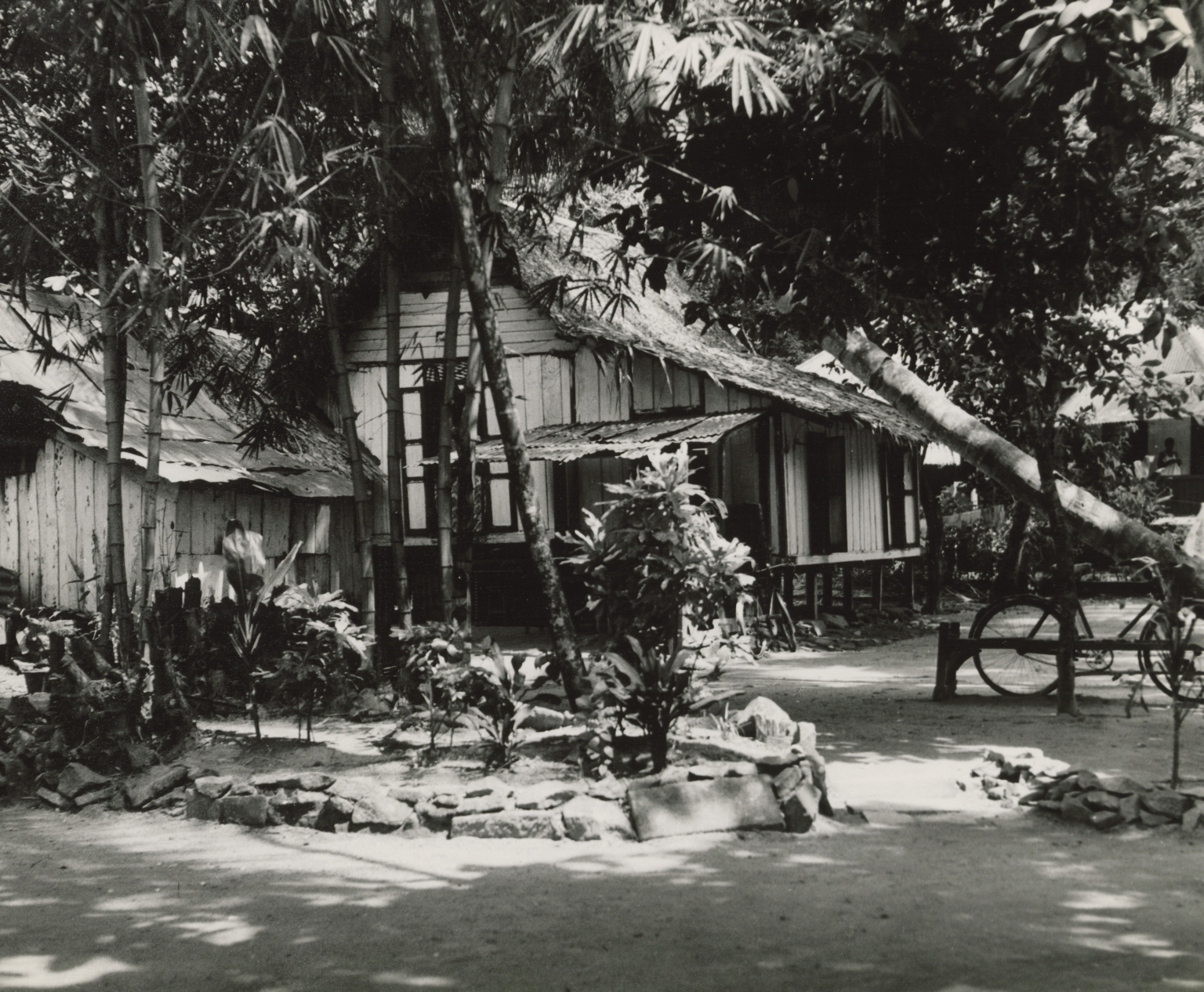TL;DR
Commonly served during Javanese family events, Nasi Ambeng has become an important dish in Javanese food culture and identity in Singapore. Overtime, this dish has weaved its way into becoming a visible and prominent dish in the wider Malay food cuisine in Singapore.
By Syafiq Moklas (NTU History Programme)
Commonly served during Javanese family events, Nasi Ambeng has become an important dish in Javanese food culture and identity in Singapore. Over time, this dish has weaved its way into becoming a visible and prominent dish in the wider Malay food cuisine in Singapore.
Nasi Ambeng often consist of juicy beef/chicken rendang (slow cooked meat), aromatic sambal goreng (fried chilli paste cooked with fermented soybeans and long beans), crispy tempe goreng (fried fermented soybeans), crunchy mix of urap (salad with coconut dressing) and serunding (sautéed grated coconut), accompanied by a large portion of fragrant white rice. It is the combination of these ingredients which epitomises the delicacy, exquisiteness, and the goodness of Javanese food into one large sharing platter. The actual combination of ingredients differs from place to place. It is the spirit of communal eating that forms the core of Nasi Ambeng.
While other Javanese dishes such as Nasi Tumpeng ties in spiritual significance with the food, Nasi Ambeng is more often seen as a dish for everyone, for every occasion. Singaporeans of Javanese descent fondly remember having Nasi Ambeng during every majlis (‘occasions’ in Malay). For 97 years-old Sa’adiah binte Haji Hamzah, she vividly recalls how Nasi Ambeng was served for most communal occasions during her stay at Kampong Java.
“From majlis doa kesyukuran (thanksgiving prayer ceremony) to slamaten (Javanese communal feast), Nasi Ambeng would be served to guests after wrapping up the prayer sessions during these events.”
Yet, the Nasi Ambeng platter was never meant to be eaten completely. Instead, guests eating from the platter will leave some food to be shared among themselves and brought home for their respective families. This tradition is also known as Nasi Berkat (food blessed by host to be brought home) and was a common practice at most Javanese events. It was only in the late 1970s that the commercialization of Nasi Ambeng began, with the dish being introduced to restaurants and eateries. Madam Azizah Ali, who founded Azizah’s Restaurant, located along Emerald Hill, was one of the pioneers in serving Nasi Ambeng commercially. It quickly grew to become one of the most popular dishes in her restaurant.
Today, Nasi Ambeng is often served in many Malay restaurants and eateries. Perhaps, this is a prime example of the amalgamation of 2 identities – both Malay and Javanese. With more sub-ethnic Malay groups (such as Javanese, Boyanese and Bugis) identifying oneself as being ‘Malay,’ it is interesting on how they have infused parts of their own culture into the Malay culture; food being one of them!
The shifting identities of the Javanese and Malay communities inevitably saw the absorption and adaptation of Nasi Ambeng into Malay food cuisine. One example would be Padi @ Bussorah. While they present themselves as specialists in Malay cuisine, Padi @ Bussorah has included Nasi Ambeng into their menu. Not only does this widen their selection of Malay cuisines, it also solidifies Nasi Padang’s acceptance as being part of the wider Malay cuisines.
To further illustrate Nasi Ambeng’s position within the Malay community, we take a look at a humble eatery that serves Nasi Ambeng as part of their main set meals. Currently situated at 182 Woodlands Street 13, its owner, Madam Rosliah (a lady of Boyanese-descent), has incorporated Nasi Ambeng into its menu- since the mid-1990s- as she saw an increasing demand among her customers. Having already served Nasi Padang, the addition of Nasi Ambeng reinforced the diverse array of food traditions on offer at the restaurant, highlighting the cultural diversity encapsulated within Malay food.
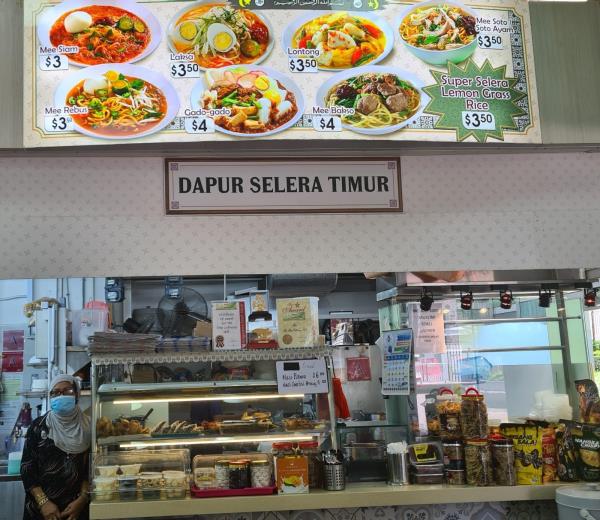
It is evident that Nasi Ambeng has become popular among many within the Malay community and has become an important staple dish in the evolving Malay cuisine of Singapore. Additional dishes have begun to be included into Nasi Ambeng, creating more variety and vibrancy to the meal. Also, eateries and restaurants are starting to serve Nasi Ambeng as an individual plate, instead of the usual sharing platter. This demonstrates the adaptability of the Nasi Ambeng dish as it began to cater to a new audience and market.
Speaking of new audiences and markets, Nasi Ambeng saw itself to be the centre of a debate with Violet Oon’s rendition of the ‘Nyonya Nasi Ambeng Tray,’ later renamed to ‘Family Trays.’ While members of the Javanese Singaporean community expressed concerns over the possibility of misappropriating their culture, it can also be viewed as an example of how Nasi Ambeng’s popularity has transcended cultural borders. The fluidity of culture proves to be its remarkable element, yet, it is also undoubtedly important to understand the value and meaning of the Nasi Ambeng dish within the Javanese community.
Finally, we examine Warong Anak Wedok (“Female’s Stall” in Javanese), ran by two sisters, Madam Sulami Margimin and Madam Suriati Margimin (both of Javanese-descents). Unlike the previous eateries, Warong Anak Wedok aims to not only serve authentic Javanese cuisines but also to introduce Singaporeans to new and interesting Javanese dishes. Since its inception in early 2018, Warong Anak Wedok has served a variety of Javanese dishes to their customers such as Ayam Lemak Pecel (Chicken cooked in Pecel Coconut Milk). Needless to say, Nasi Ambeng places itself as one of their top sellers!
Previously situated in Fragrance Empire Building, Warong Anak Wedok catered to the needs of its customer by serving Nasi Ambeng in an individual plate, instead of its usual sharing platter. This move demonstrates how culture can still be appreciated in respect with the changing of setting.
As Warong Anak Wedok is gearing up to re-open their business in a new location, they are also keen to introduce a new rendition of Nasi Ambeng. Known as Nasi Remes (mixed rice), this dish consists of Nasi Liwet’s (Javanese spiced anchovies rice) and Nasi Ambeng’s dishes. While Nasi Ambeng was originally served as a sharing platter, Nasi Remes is served individually. This interesting development shows how Nasi Ambeng is being continually modified and served in new ways, even within Javanese cuisine.
“We want to showcase the fluidity of Javanese cuisines, particularly Nasi Ambeng.”
Amidst the commercialisation of Nasi Ambeng, it is often forgotten that the essence of Nasi Ambeng is to bring family members and friends together. Sharing a meal on the same platter binds people in a very different manner from a group eating from separate plates. For 67 years-old Moklas bin Ma’arof, Nasi Ambeng (on a platter) has been a norm since his younger days and his family would try their best to have it together on special occasions such as birthdays or at get-together sessions.
“Nothing beats seating together around a tray of delicious food, shared among my loved ones.”
Undoubtedly, Nasi Ambeng has maintained its significance and position in the hearts of the Javanese community, although it has been absorbed into wider Malay cuisine and also been transformed through processes of culinary innovation and cross-cultural fusion. Understanding its past and its evolution highlights the fluidity of culture - in this case, food culture. Importantly, it provides us a better understanding of Nasi Ambeng within the Javanese community.
About partner
Syafiq Moklas (NTU History Programme)
Syafiq Moklas is an alumni of the History undergraduate programme from Nanyang Technological University. Currently, he is working on a project, initiated by Assistant Professor Koh Keng We (Nanyang Technological University, History) regarding Perceptions, Practice, and Performance: Negotiating Javanese Identity and Heritage in post-1965 Singapore.
The NTU History Programme strives to be a leading centre for researching and teaching interdisciplinary, Asian, and world/transnational history, while pushing innovative and immersive approaches to learning about and exploring Singapore's past and heritage. It welcomes students, scholars, and interested members of the public to join us in these endeavours! Find out more about our programmes, research, and events at https://www.ntu.edu.sg/soh/about-us/history or find us on Twitter (@NTUHistory)!
This photo essay was produced as part of the Singapore HeritageFest (SHF) 2021.




